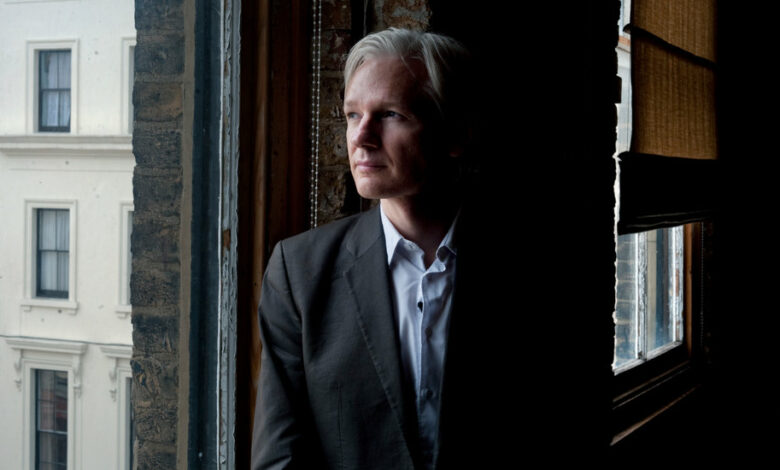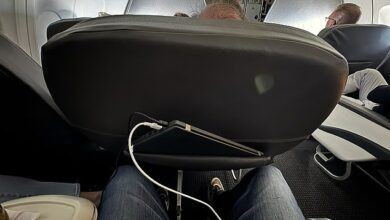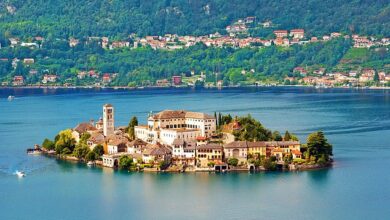The digital world is a powder keg. Julian Assange lit the fuse.

On the morning of April 5, 2010, a tall, thin man with a mop of silver hair walked up to a lectern at the National Press Club in Washington, DC. He had been running an obscure news website from Iceland for four years. trying and failing to find a scoop that would set the world on fire. Many of the forty or so journalists (including myself) who showed up had barely heard of him.
Still, it was hard to ignore his pitch. Three days earlier, we had received an email promising a “never-before-seen secret video” with “dramatic evidence and new facts.”
But even this bit of hype may have understated what happened after the man, Julian Assange, pressed play. The nature of evidence – the volume and granularity of digital evidence, along with the avenues by which it comes to light – was about to change.
Previously, information leaking from insiders to the public was largely limited by the limitations of paper. In 1969, Daniel Ellsberg had taken an entire night to secretly photocopy a secret study on the Vietnam War that would become known as the Pentagon Papers.
Now thousands of such documents – along with images, videos, spreadsheets, email pools, source code and chat logs – can be dragged onto a USB stick and sent around the world in seconds. Find an insider with enough access or a hacker with enough talent and any security system can break. Sources can be hidden. All that was missing was a middleman: a publisher who could find leaks, post the stuff, and then take the pressure after it went live.
Assange’s video had an incendiary title: “Collateral Murder.” It began with a still photo of a son holding a photo of his late father, a driver for the Reuters news agency, followed by leaked footage of a 2007 airstrike showing an American helicopter shooting dead a Reuters photographer and his driver on the street in Baghdad.
There was the drawl of a US soldier using an expletive to refer to a man hundreds of meters below him – one of the Reuters employees killed in the attack. The video appeared to contradict a report from a Pentagon spokesman, who claimed the airstrike was part of “combat operations against a hostile force.” Within hours the story was picked up by Al Jazeera, MSNBC and The New York Times.
What followed was a series of seismic revelations, some by Mr. Assange’s site, WikiLeaks, some by other media outlets. It continues to this day: a trove of State Department cables published by WikiLeaks in collaboration with The Times (2010-11), revelations by Edward Snowden of the National Security Agency (2013), the hack of Sony Pictures (2014), the Drone Papers (2015), the Panama Papers (2016), hacked Democratic National Committee emails (2016), details of US offensive cyber programs (2017), Hunter Biden’s laptop (2020) and the Facebook Files (2021), to name a few.
In retrospect, it’s easy to see Mr Assange as the father of the digital leak revolution. At the time, he seemed more like a talented promoter, someone who positioned himself at the centre of various currents that were beginning to converge around the turn of the millennium.
“People were hacking into systems and taking documents in the late 1990s and early 2000s, but those hackers were ideologically disinclined to hack and leak,” says Gabriella Coleman, a Harvard anthropology professor whose new book “Weapons of the Geek” , will contain two chapters on the history of hacking and leaks.
Mr. Assange was the first to figure out how to bring the fruits of this to the mass audience reached by the traditional news media. Even as his legal saga draws to a close with his guilty plea and return to Australia, it is clear that his larger legacy – the fleeting fusion of illegal hack-and-leak methods with the reach and credibility of established American publishers – is still unfolding.
On Wednesday, Assange pleaded guilty to conspiring with one of his sources, Chelsea Manning, to obtain and publish government secrets in violation of the Espionage Act. Ben Wizner, director of the American Civil Liberties Union’s free speech, privacy and technology project, said the conviction could have far-reaching implications.
“This was the first time in modern American history that we saw the publication of truthful information being criminalized,” Mr. Wizner said. “The reason it hadn’t happened before wasn’t necessarily because of the law. It was probably a practice. That practice depended on a relationship between the media and the government, a sense that while they had different ideas about what the public interest was, they both had a fundamentally American sense of what the public interest was. Along comes WikiLeaks. They believe that American imperialism is the greatest threat to world peace. It’s a view of the public interest that is radically different from that of the American state, and it’s challenging the old consensus.”
At a rudimentary level, Mr. Assange’s activities largely resembled those of the traditional news media. He collected and published authentic, newsworthy information. However, his goals were different.
Rather than claiming neutrality or objectivity, Assange called himself a warrior, sworn to the cause of radical transparency. He refused to accept that even democratic governments needed a certain degree of secrecy to function. Instead, he sought, in his words, to “change the behavior of the regime” by making secrecy itself untenable. In its place would emerge “the will of the people for truth, love and self-realization.”
It was a utopian vision, more an excuse than an argument. One of the contradictions in Assange’s trial is how much his freedom depended on precisely the kind of backroom diplomatic dealings he had spent years deriding and exposing.
As director of national intelligence under President Barack Obama, James R. Clapper Jr. had to deal with the aftermath of many hack-and-leak episodes. In an email interview, he rejected the idea that Assange’s revelations had changed anyone’s view of the morality of the U.S. intelligence apparatus. Instead, he said, WikiLeaks only served to reinforce the preexisting views of the faction that already believed U.S. spy agencies were “evil.”
“I don’t think the needle moved one way or the other,” he said.
Still, Ms. Coleman said, the history of the leak is still being written, in part by organizations like Distributed denial of secrets And XnetLeaks. Like WikiLeaks, these sites solicit and post large amounts of digital leaks. But they have higher standards when it comes to editing information and checking sources.
As for Mr. Assange, he was conducting “a very bold experiment,” Ms. Coleman said. “Experiments always have successes and failures. But you needed someone who was bold and went for it.”




